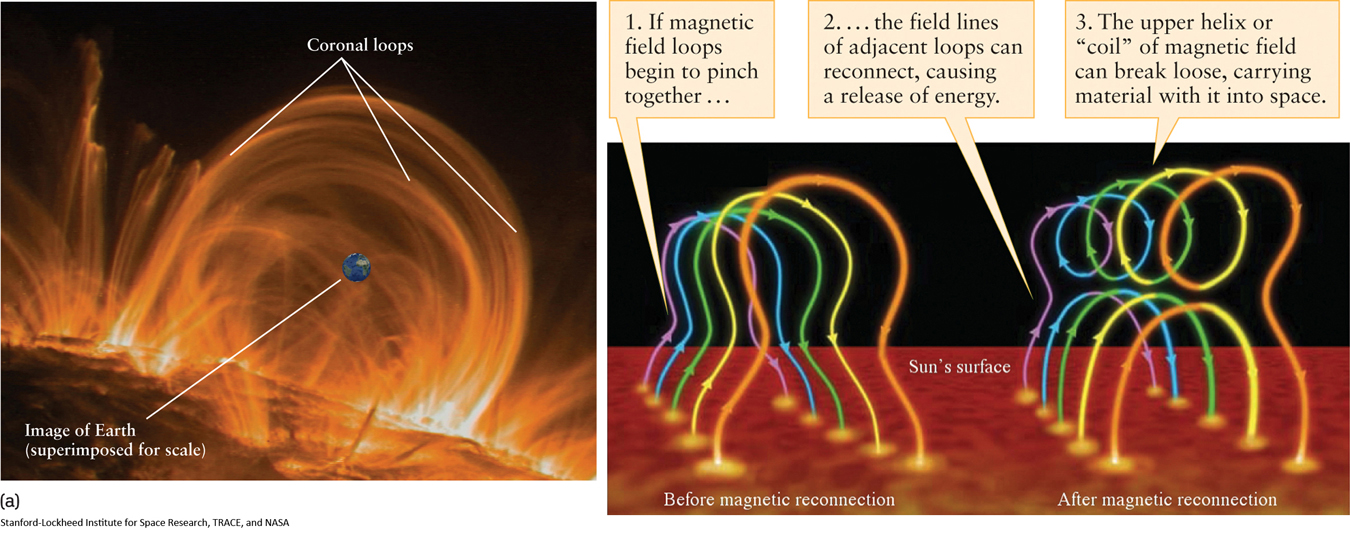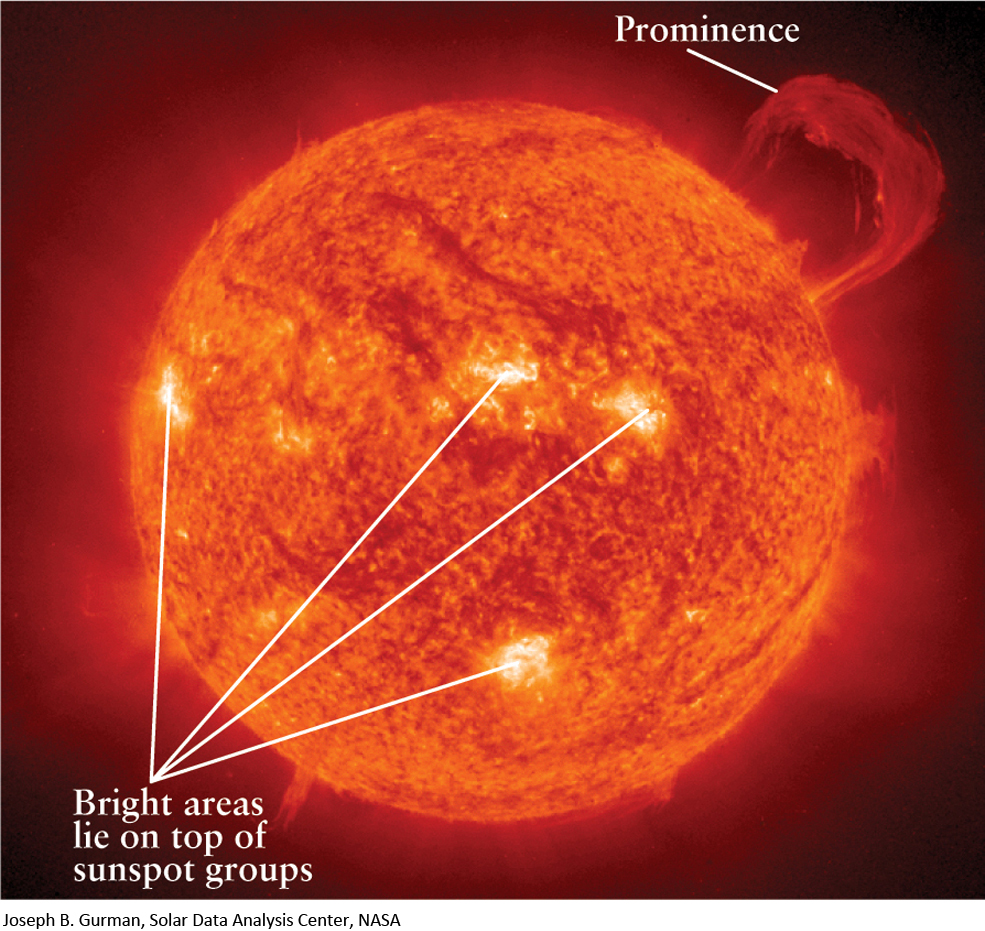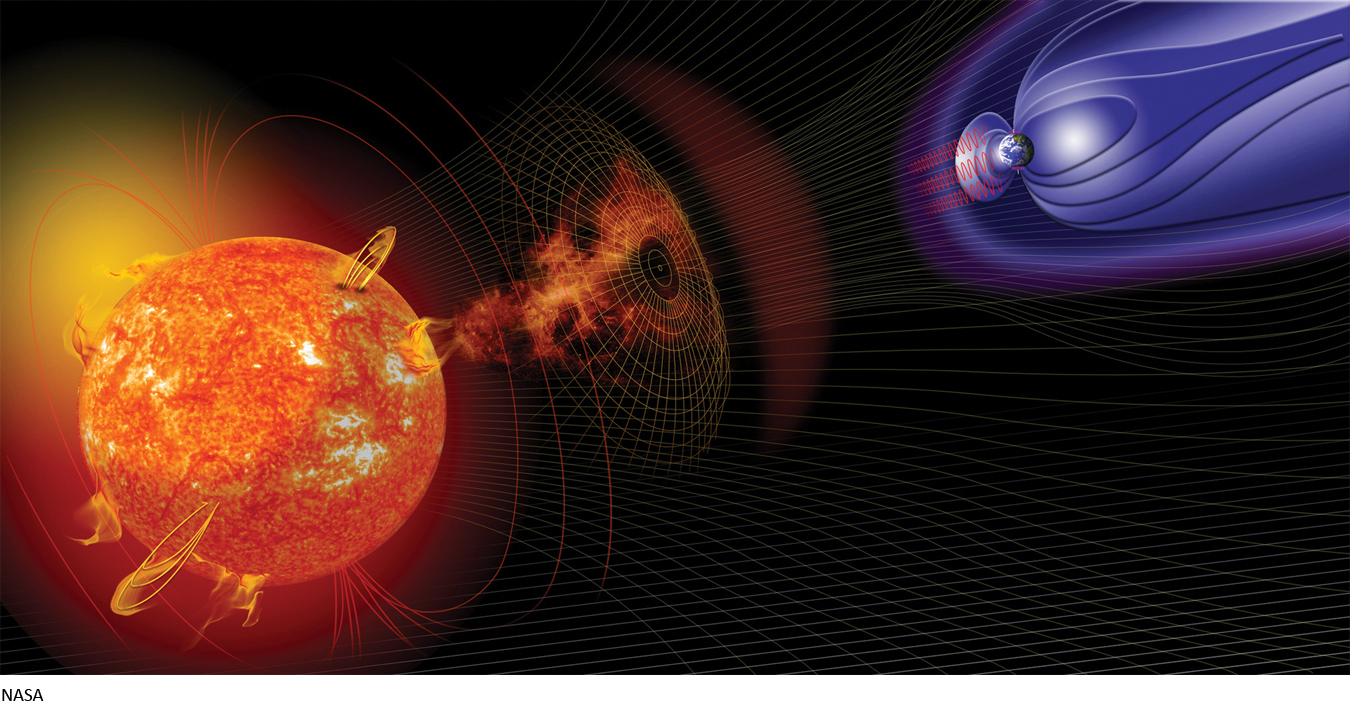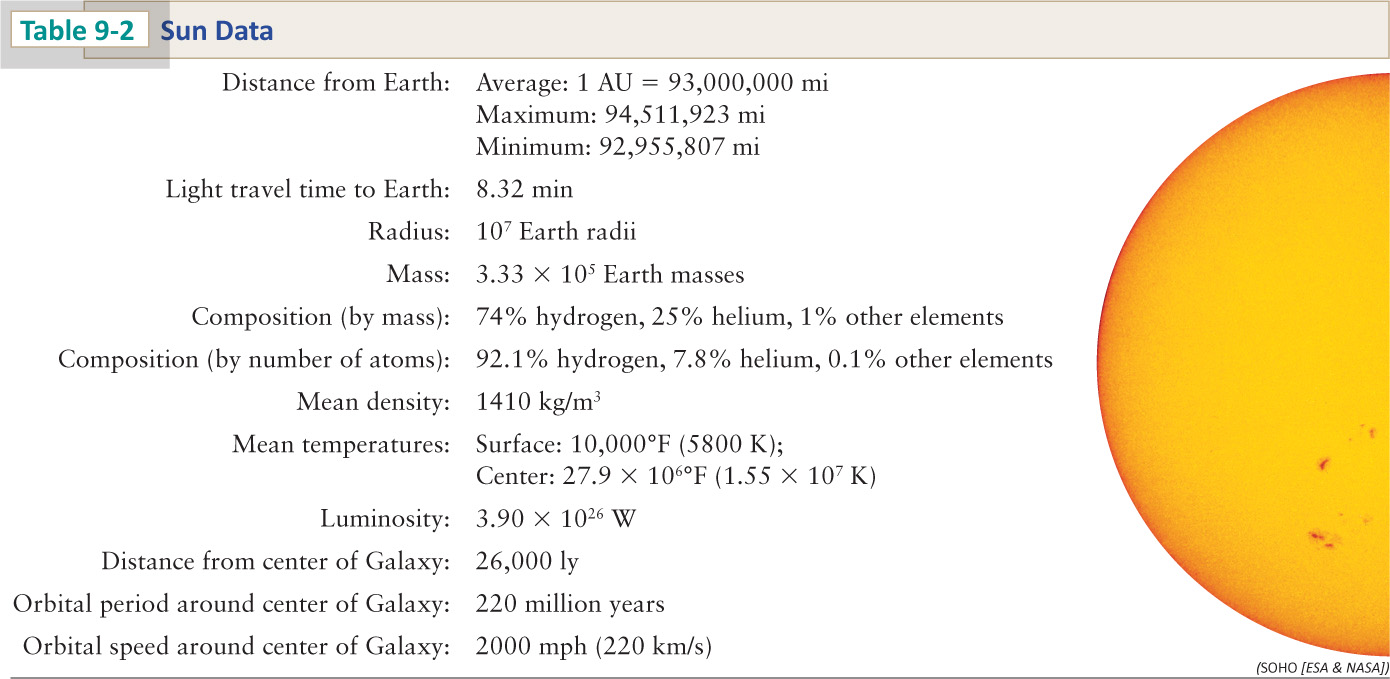9-5 The Sun’s magnetic field also produces other forms of solar activity and causes aurorae on Earth
If magnetic fields are so powerful on the Sun, what other effects might the Sun’s intense magnetic field be able to cause? In fact, the Sun’s magnetic field does more than just explain the presence of sunspots.
Magnetic Arches
In a plasma, magnetic field lines and the material of the plasma tend to move together. The tendency of plasma to follow the Sun’s magnetic field helps to explain why the temperature of the chromosphere and corona is so high. Spacecraft observations show magnetic field arches extending tens of thousands of kilometers into the corona, with streamers of electrically charged particles moving along each arch (Figure 9-20a). If the magnetic fields of two arches come into proximity, their magnetic fields can rearrange and combine. The tremendous amount of energy stored in the magnetic field is then released into the solar atmosphere. Consider that a single arch contains as much energy as a hydroelectric power plant would generate in a million years on Earth. The amount of energy released in this way appears to be more than enough to maintain the temperatures of the chromosphere and corona.

ANALOGY
The idea that a magnetic field can heat gases has applications on Earth as well as on the Sun. In an automobile engine’s ignition system an electric current is set up in a coil of wire, which produces a magnetic field. When the current is shut off, the magnetic field collapses and its energy is directed to a spark plug in one of the engine’s cylinders. The released energy heats the mixture of air and gasoline around the plug, causing the mixture to ignite. This drives the piston in that cylinder and makes the automobile go.
221
Magnetic heating can also explain why the parts of the corona that lie on top of sunspots are often the most prominent in ultraviolet images. (Some examples are the brighter regions in Figure 9-12.) The intense magnetic field of the sunspots helps trap and compress hot coronal gas, giving it such a high temperature that it emits copious amounts of high-energy ultraviolet photons and even more energetic X-ray photons.
Question
ConceptCheck 9-17: Why does glowing plasma on the Sun appear to arch up above the Sun’s photosphere?
Prominences, Solar Flares, and Coronal Mass Ejections
 Go to Video 9-4
Go to Video 9-4
Coronal heating occurs even when the Sun is quiet. But magnetic fields can also push upward from the Sun’s interior, compressing and heating a portion of the chromosphere that appears as bright, arching columns of gas called prominences (Figure 9-21). These can extend for tens of thousands of miles above the photosphere. Some prominences last for only a few hours, while others persist for many months. The most energetic prominences break free of the magnetic fields that confined them and burst into space.

Violent, eruptive events on the Sun, called solar flares, occur in complex sunspot groups. Within only a few minutes, temperatures in a compact region may soar to 10 million degrees Fahrenheit (5 × 106 K), and vast quantities of particles and radiation—including as much material as is in the prominence shown in Figure 9-21—are blasted out into space. These eruptions can also cause disturbances that spread outward in the solar atmosphere, like the ripples that appear when you drop a rock into a pond.
The most energetic flares carry as much as 1030 J of energy, equivalent to 1014 one-megaton nuclear weapons being exploded at once! However, the energy of a solar flare does not come from thermonuclear fusion in the solar atmosphere; instead, it appears to be released from the intense magnetic field around a sunspot group.
As energetic as solar flares are, they are dwarfed by coronal mass ejections. One such event is shown in the image that opens this chapter; Figure 9-22 shows another. In a coronal mass ejection, more than 1012 kg (a billion tons) of high-temperature coronal gas is blasted into space at speeds of hundreds of kilometers per second. A typical coronal mass ejection lasts a few hours. These explosive events seem to be related to large-scale alterations in the Sun’s magnetic field, like the magnetic reconnection shown in Figure 9-20b. Coronal mass ejections occur every few months; smaller eruptions may occur almost daily.

222
If a solar flare or coronal mass ejection happens to be aimed toward Earth, a stream of high-energy electrons and nuclei reaches us a few days later (on the right of Figure 9-22). When this plasma arrives, it can interfere with satellites, pose a health hazard to astronauts in orbit, and disrupt electrical and communications equipment on Earth’s surface. Telescopes on Earth and on board spacecraft now monitor the Sun continuously to provide warnings of dangerous levels of solar particles.
The number of prominences, solar flares, and coronal mass ejections all vary with the same 11-year cycle as sunspots. But unlike sunspots, coronal mass ejections never completely cease, even when the Sun is at its quietest. Astronomers are devoting substantial effort to understanding these and other aspects of our dynamic Sun.
223
Table 9-2 lists essential data about the Sun, but studies are ongoing to refine the characteristics of our nearest star. One of the most important reasons to understand the changing nature of the Sun is how it impacts Earth. As discussed in Chapter 5, the Sun’s energy impacts Earth in many ways. One of the most obvious of these, shown in Figure 9-23, is the collision of charged particles from the solar wind with molecules in Earth’s upper atmosphere, causing the northern lights.


Question
ConceptCheck 9-18: Which of the following are the most energetic: prominences, solar flares, or coronal mass ejections?
224